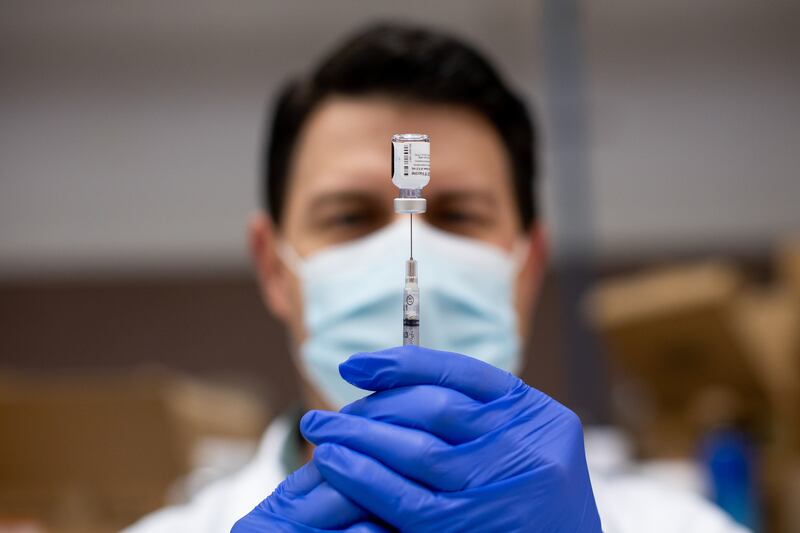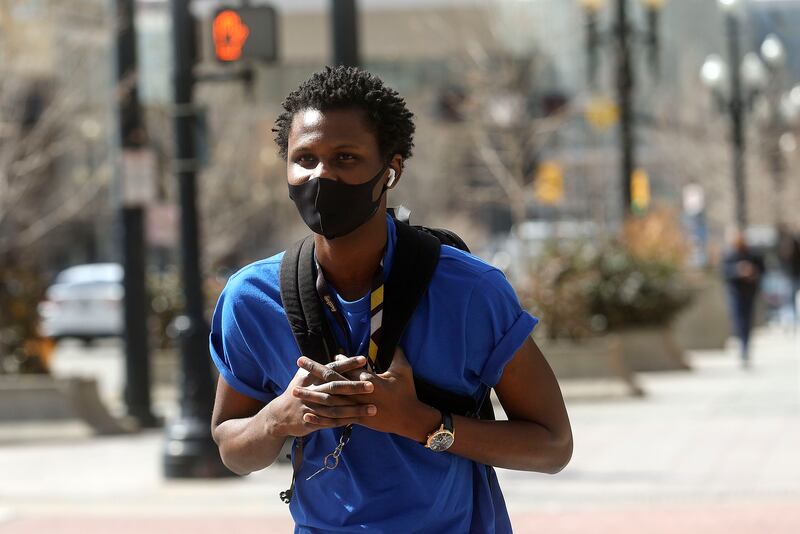SALT LAKE CITY — Salt Lake County Mayor Jenny Wilson said Wednesday she hasn’t decided yet whether to recommend continuing to require that masks be worn in public after the statewide mask mandate ends on April 10.
The mayor said she and county health department Executive Director Gary Edwards both want residents “to wear masks while they’re out until we have herd immunity, so whether at that time the recommendation is to impose a requirement or to urge business and others to individually impose that is TBD. We’re going to wait and see.”
Wilson said even though there’s no question that masks are effective to protect against the spread of COVID-19, she’s taking other factors into consideration as she prepares a proposal for the Salt Lake County Council that will come sometime closer to the April 10 date set by the 2021 Legislature for ending the statewide mandate.

“It’s really been a rough year. It’s been a rough political year. It’s been a rough year for health. It’s been a rough year for our families and for our businesses. And what I don’t want to do is stir things up,” she told reporters during a news conference about the county’s vaccination efforts.
The bill signed by Gov. Spencer Cox Wednesday also eliminates all coronavirus restrictions no later than July once Utah has received 1.63 million vaccine doses, enough for 70% of the population, if cases counts and hospitalization rates stay low.
Utah should hit that level of vaccine doses received from the federal government “somewhere around May 10-17,” said Rich Lakin, the Utah Department of Health’s immunization director. He said Utah hopes to have about 1.9 million residents 16 and older vaccinated with at least one dose by the end of May.
It takes at least two weeks after the final dose of the COVID-19 vaccine to be considered fully vaccinated. Two of the three vaccines approved for use in the United States, from Pfizer and Moderna, require two doses up to 28 days apart, while the newest vaccine, from Johnson & Johnson, requires only a single dose.

The governor had hoped to wait to lift the mask mandate put in place last November by his predecessor, Gov. Gary Herbert, until Utah had enough vaccine for 70% of the population, seen as the low end for reaching what’s known as herd immunity when enough people are resistant to a disease that transmission stalls.
But Cox said he negotiated the April 10 end date because lawmakers claimed during the session that ended in March to have a veto-proof majority to end the mandate immediately. He said the bill was “not what we wanted,” but was the best deal he could make.
Wilson said 55 weeks after the start of the pandemic, “we’re getting closer to getting life back to what we used to know. But we are still facing challenges due to COVID-19.” She said the county remains committed “to life throughout COVID and to life after.”
Variants of the virus, including from the United Kingdom and Brazil that have already been identified in Utah, continue to pose a threat, the mayor said, adding “whether it’s regulated or not, we have common sense and we have information now” about the importance of wearing masks.
Edwards said “a vaccine that is 95% effective is really good, but it’s still not 100%. The mask continues to give added protection. And we still don’t know, and we’re not going to know as we are out and about, who has been vaccinated and who has not been vaccinated,” urging people to be “sensitive to that and respectful” of others.
Coronavirus cases have fallen 79% in Salt Lake County since January, he said, calling that “tremendous progress. That gives us hope and optimism as we move into the summer, but we have to remember this is not over” until more residents are vaccinated.
The governor’s announcement last week that all Utahns 16 and older are eligible to be vaccinated against COVID-19 starting Wednesday prompted more than 31,000 people to schedule shots through Salt Lake County, Edwards said, leaving about 17,000 appointments available through the end of April.

Over the past three weeks, Salt Lake County’s vaccination clinics alone have inoculated 30,000 people a week, Edwards said, and are “prepared to do more than that, even double that amount,” if more vaccine doses are made available.
Lakin said the state’s allotment from the federal government has fallen short of expectations. He said Utah should get around 155,000 first and second vaccine doses next week, but was counting on getting at least 160,000 and as many as 184,000 doses.
Utah has the capacity to administer some 300,000 shots a week. Besides the state’s 13 local health departments, a number of health care providers including Intermountain Healthcare have been hired to vaccinate Utahns, and pharmacies as well as community health centers are offering shots through other federal programs.
“It’s quite disappointing,” Lakin said of a shortfall he described as happening nationwide without explanation. “I don’t know. We’re just not getting the doses. They’re obviously not producing vaccines as quickly as they thought they would.”
That would be understandable, Lakin said, since care must be taken to ensure every dose is manufactured correctly. He said the Biden administration may have been too optimistic about how quickly new orders for hundreds of millions of doses could be filled.
Still, Lakin said Utah doesn’t expect to see any decrease in doses. If that remains the case, he said the vaccine could become available through family doctors by the end of May or June.
Another 562 COVID-19 cases, five additional deaths from the virus reported
The Utah Department of Health reported 562 new COVID-19 cases and five additional deaths from the virus Wednesday. There have now been more than 1.2 million vaccine doses administered in the state, a daily increase of 27,965.
The rolling seven-day average for positive tests is 424 per day, and another 7,932 people have been tested for COVID-19 since Tuesday. The rolling seven-day average for percent positivity of tests is 3.9% when all results are included, and 7.7% when multiple tests by an individual in the past 90 days are excluded.
Currently 127 people in Utah are hospitalized with the novel coronavirus. The five deaths reported Wednesday, including four that occurred before March 1, bring the state’s death toll from COVID-19 to 2,082.
The deaths are:
- A Cache County woman, older than 85, not hospitalized at time of death.
- A Carbon County man, between the ages of 65 and 84, hospitalized at time of death.
- A Salt Lake County man, older than 85, not hospitalized.
- A Sanpete County man, 65-84, not hospitalized.
- A Sanpete County man, 65-84, a long-term care facility resident.


